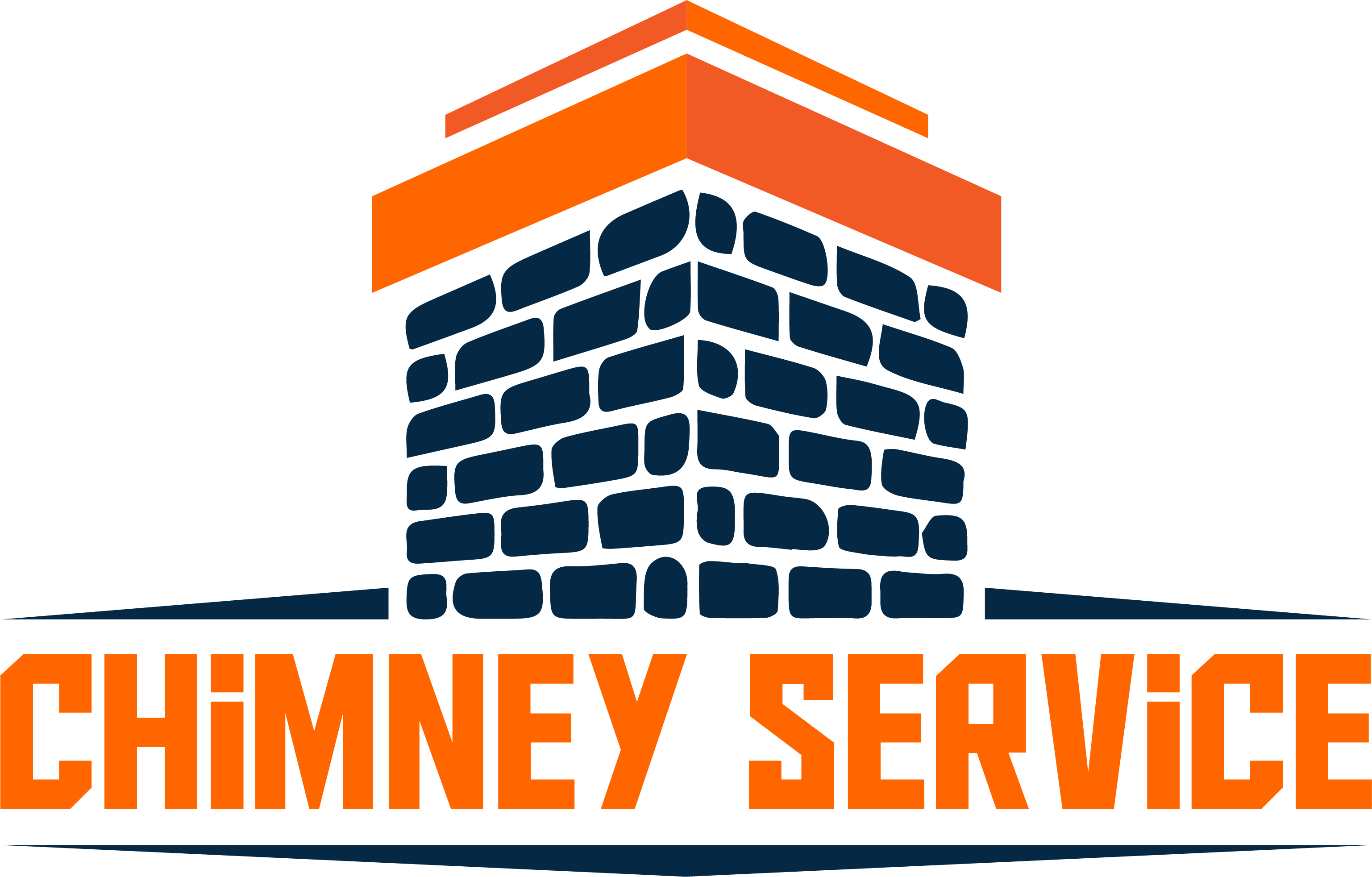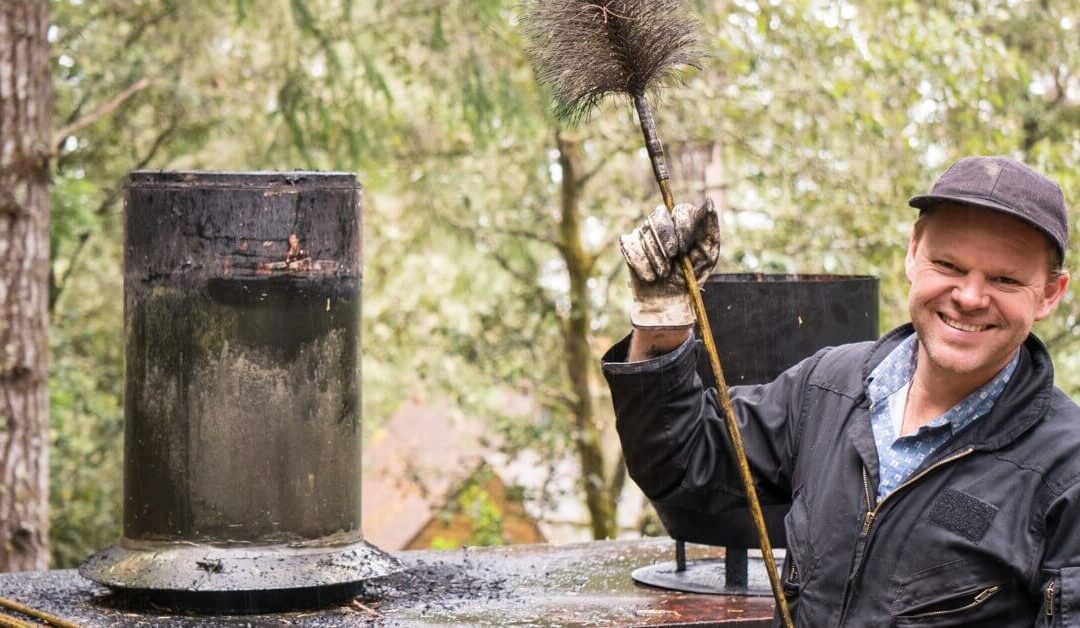Your cozy fireplace and chimney are the heart of your home, providing warmth and comfort during chilly winter nights. However, there’s a potential downside to these beloved features: unwanted furry or feathered visitors who decide to make your chimney their new home. When critters like birds, squirrels, raccoons, or even bats take up residence in your chimney, it can pose risks to both your home and the animals themselves.
At Chimney Service NJ, we understand the importance of maintaining a safe and functional chimney while respecting the wildlife that may find their way inside. With our years of expertise in chimney services, we’re excited to introduce our comprehensive guide on safe animal removal from your chimney.
This informative blog series will delve into the challenges and solutions associated with critter invasions in your chimney. From understanding the signs of infestations to humane removal techniques and preventive measures, we’ve got you covered.
Our certified experts are passionate about chimney safety and wildlife welfare. We recognize that addressing animal intrusions is a delicate matter that requires a balance between safeguarding your home and ensuring the well-being of these unintended guests. You’ll learn to navigate these situations with our guidance, care, and compassion.
In upcoming blog posts, we will explore a range of topics related to chimney animal removal, including:
- Identifying Chimney Infestations: We’ll help you recognize the signs of unwelcome chimney inhabitants, from the sounds they make to the telltale clues they leave behind.
- Safe and Humane Removal: Discover the methods and tools that ensure the safe removal of animals from your chimney, including how to protect both your property and the creatures involved.
- Preventive Measures: Learn proactive steps to keep critters out of your chimney, such as caps, screens, and routine inspections.
- Legal Considerations: Understand the legal aspects of critter removal, including wildlife protection laws and permits that may be necessary for certain species.
- Chimney Restoration: If your chimney has suffered damage from animal intrusions, we’ll guide you through the restoration process to ensure it’s back in optimal condition.
At Chimney Service NJ, we’re not just experts in chimney care; we’re dedicated to providing the knowledge and resources to keep your home safe, comfortable, and wildlife-friendly. With our guidance, you’ll be well-equipped to address chimney critter invasions effectively and responsibly.
Stay tuned for our upcoming blog posts as we embark on this educational journey to help you navigate the world of safe animal removal from your chimney. Your fireplace and furry friends will thank you!
Recognizing Chimney Infestations: Signs and Sounds to Watch For
Chimney infestations often go unnoticed until the signs become too evident to ignore. Being vigilant and recognizing these signs is the first step in addressing the issue. Here are some key indicators of chimney infestations:
Strange Sounds: Unusual sounds, such as scratching, chirping, or fluttering, coming from your chimney are often a clear sign of animal activity. These noises are usually most noticeable in the early morning or evening when animals are most active.
Foul Odors: Animal droppings and nesting materials can emit unpleasant odors that may permeate your home. If you notice a foul smell, particularly near your fireplace, it’s a sign that animals may have taken up residence.
Visible Debris: If you find twigs, leaves, feathers, or other debris in your fireplace or hearth area, it could be a sign that animals are building nests in your chimney. Be cautious when cleaning these materials, as they may carry diseases.
Blockages and Reduced Draft: Animals, especially birds, may construct nests that block the chimney flue. This can reduce airflow and ventilation issues, making it difficult for smoke to exit the chimney properly.
Visual Sightings: Sometimes, you might see animals entering or exiting your chimney, especially in the spring when many species seek nesting sites. Take note of any wildlife activity in or around your chimney.
Chimney Cap Damage: Inspect your chimney cap regularly. If it’s damaged or appears to be tampered with, it may indicate animals attempting to gain access to your chimney.
Recognizing these signs early can help you address the infestation promptly, minimizing potential damage to your chimney and ensuring the safety and well-being of the animals involved.
Safe and Humane Removal Techniques: Protecting Your Home and Wildlife
When removing animals from your chimney, it’s essential to prioritize their safety and well-being while safeguarding your home. Here are some safe and humane removal techniques:
Professional Intervention: In most cases, it’s advisable to seek the assistance of a licensed wildlife removal expert. They have the experience and equipment to safely capture and relocate animals without causing harm.
Chimney Sweep Services: A certified chimney sweep can assess the situation and implement humane removal methods. They will also inspect for any damage caused by the infestation and recommend repairs.
One-Way Doors: These devices allow animals to exit the chimney but prevent them from re-entering. They are a humane way to encourage animals to leave on their own.
Eviction Fluids: When applied by professionals, some substances can encourage animals to vacate the chimney safely.
Prevent Re-entry: After removal, it’s crucial to take preventive measures to ensure animals don’t return. Installing chimney caps and screens is an effective way to block access while allowing for proper ventilation.
Remember, removing animals yourself can be dangerous and is often not recommended. Professionals have the expertise to handle wildlife safely and comply with local regulations.
In conclusion, recognizing chimney infestations and ensuring safe, humane removal are vital steps in maintaining the safety and functionality of your chimney while respecting the well-being of wildlife. Seeking professional assistance and implementing preventive measures can help you navigate this challenging situation effectively.
Preventive Measures: Keeping Critters Out of Your Chimney
Preventing critters from entering your chimney in the first place is often more straightforward and cost-effective than dealing with an infestation. Here are some preventive measures you can take:
Chimney Caps: Installing a chimney cap is one of the most effective ways to keep animals out. These metal or mesh covers fit over the chimney opening, allowing smoke and gases to escape while blocking access to wildlife.
Chimney Screens: Chimney screens or spark arresters are like caps but provide an added layer of protection. They prevent animals, sparks, and debris from entering the chimney.
Regular Inspections: Schedule regular chimney inspections, preferably before the start of the heating season. A professional chimney sweep can identify potential entry points and vulnerabilities that may attract wildlife.
Seal Entry Points: Ensure any cracks, gaps, or openings in your chimney’s structure are sealed. This includes areas where the chimney meets the roof and gaps in the chimney flue liner.
Trim Nearby Trees: Overhanging branches can provide easy access for animals to reach your chimney. Trim branches too close to your chimney to deter critters from climbing onto your roof.
Keep a Clean Yard: Remove food sources and potential nesting materials from your yard, as these can attract animals. Secure garbage cans and avoid leaving pet food outside.
Educate Your Family: Teach your family the importance of not feeding or interacting with wildlife. Encourage responsible behavior to avoid attracting animals to your property.
Taking these preventive measures can save you the hassle and cost of dealing with an infestation while ensuring the safety of both your home and the local wildlife.
Legal Considerations in Critter Removal: Understanding Wildlife Protection Laws
You must know and comply with relevant wildlife protection laws when dealing with wildlife in and around your home. These laws vary by location and may include restrictions on capturing, relocating, or harming certain species.
Before attempting critter removal, check with your local wildlife authorities or conservation agencies to understand the legal requirements. Sometimes, you may need permits or licenses to handle specific species or relocate animals.
Working with licensed wildlife professionals is often the safest and most legal way to address critter infestations while ensuring compliance with local regulations. These experts have the necessary training and permits to handle wildlife safely and by the law.
Chimney Restoration After Infestations: Bringing Your Chimney Back to Life
Once you’ve successfully removed animals from your chimney, assessing and addressing any damage they may have caused is essential. Chimney restoration may be necessary to ensure your chimney is in optimal condition. Here are the steps involved:
Inspection: Have a professional chimney sweep conduct a thorough inspection to assess the extent of the damage. This includes checking for structural issues, creosote buildup, and damage to the chimney liner.
Cleaning: If there’s creosote buildup or debris from the infestation, a thorough cleaning is essential to restore proper chimney function and safety.
Repairs: Depending on the extent of the damage, you may need repairs such as replacing damaged bricks, mortar, or the chimney cap. Addressing these issues promptly prevents further damage and ensures the chimney’s longevity.
Chimney Liner Inspection: Check the chimney liner for any damage or deterioration. Consider liner repair or replacement if necessary to maintain proper ventilation and safety.
Preventive Measures: After restoration, it’s crucial to implement preventive measures to avoid future infestations. This includes installing or repairing chimney caps and screens, sealing entry points, and scheduling regular inspections and cleanings.
Following these steps, you can bring your chimney back to life and ensure it’s safe, functional, and protected against future critter intrusions.
In conclusion, handling critter infestations in your chimney requires a combination of vigilance, preventive measures, adherence to legal regulations, and proper restoration. Seeking professional assistance, when needed, is essential to ensure the safety and well-being of both your home and the wildlife involved. With the proper knowledge and actions, you can enjoy the warmth of your fireplace while keeping critters where they belong—outside your chimney.
In Summary:
Effectively addressing critter infestations in your chimney requires a multifaceted approach. First, recognizing the signs of an infestation, such as unusual sounds, Odors, or debris, is crucial to early detection. Once an infestation is identified, safe and humane removal techniques should be employed, preferably with the assistance of professional wildlife experts, to protect both your home and the animals involved.
Preventive measures, such as installing chimney caps screens and regular inspections, can help deter critters from entering your chimney in the first place. Knowing and complying with local wildlife protection laws is essential when handling wildlife-related issues.
After successfully removing animals from your chimney, a thorough inspection, cleaning, and potential repairs or restoration are necessary to ensure the chimney’s safety and functionality. Implementing preventive measures following restoration helps prevent future infestations.
By following these steps and seeking professional assistance as needed, you can address critter infestations effectively while safeguarding your home and the well-being of wildlife. This comprehensive approach ensures that your fireplace and chimney remain a source of warmth and comfort without any unintended furry or feathered guests.


